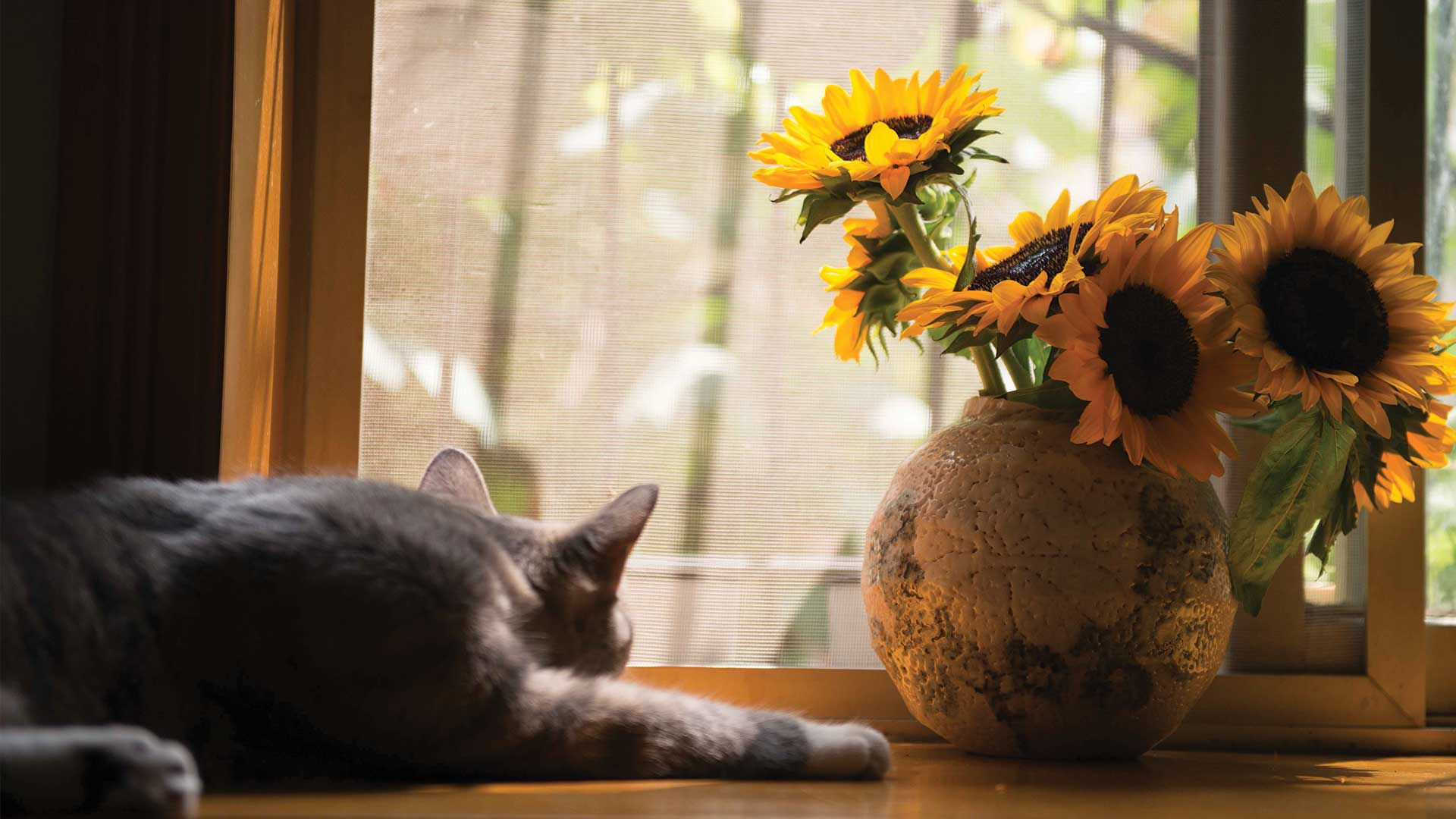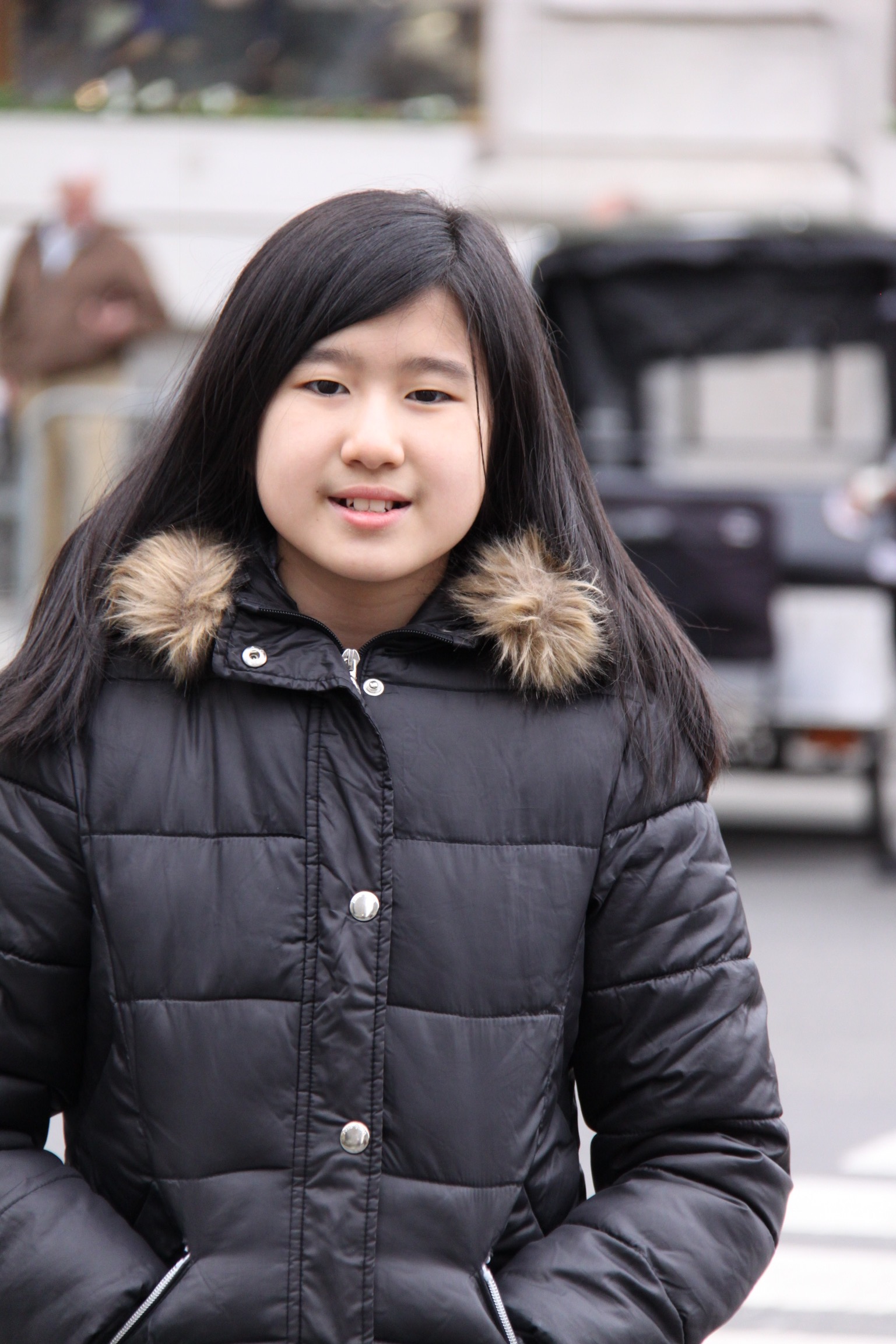
The Fall of the Cat
By Emma Yang
Kittenish: playful and lively. A kitten isn’t a kitten if it doesn’t chase after anything in sight that wriggles, hops, or glitters. A kitten isn’t a kitten if it’s not always moving on to the next item or person, hopping from lap to table to rug, stretching out its paw for a string of yarn or a dust bunny. Therefore, this kitten isn’t exactly a kitten.
It has its paws folded under its bulky belly, face pressed against the swing hanging from the ceiling of a quiet living room. Its two hind legs are awkwardly draped over the side as it silently struggles not to fall off the seat. The suspense of being suspended in air doesn’t seem to bother it. One of its eyes, a thin slice of emerald, tracks a mosquito that zips around the room. The other eye is nowhere to be found. The cat doesn’t even twitch when an ancient air conditioner turns on and buzzes like a muffled jackhammer.
This kitten is a mystery, sitting for so long in such an uncomfortable position when it could be playing with its toys or lying on a comfy bed. Most people would be tempted to dismiss it as a failure, useless and unproductive. But a sedentary life is not necessarily an unrewarding one, and so many among us–cats and people alike–are driven by uncommon (but not unworthy) passions. A curious feline or human mind might be put to use studying the emotional effect of sleeping at various times on various couches, or seeing what happens if you roll your eyes back in your head too many times. These futile obsessions may only be relevant to those who pursue them. Even if they are accused of being boring, they secretly feel that their obsessions are the most intriguing, cutting-edge subject.
Such perseverance is like standing on a board precariously balanced on top of a ball. Staying stable is the difference between success and failure–lose your balance, and you’ll go tumbling to the ground as the ball rolls out of sight. It is frustrating that your audience has no sense of the sheer willpower it takes to stay still.
In the doorway of the living room, the little girl watches the cat and wistfully chews on one of her pigtails. This isn’t new for her. This lump of a cat seems eternally indifferent to her and to everything surrounding it, but maybe this time will be different…
Feet wearing socks like bubbles of pink gum thump across the floor. The porcelain trinkets on the rickety table clink against each other like faint windchimes over the sound of the girl’s delighted squeals.
There’s a twitch of an ear. A fully opened eye. The turning of a wide, swollen head towards the oncoming girl, whose pudgy outreached hands wake the cat from the reverie it worked so hard to maintain. Their two worlds collide like tornadoes, the overwhelming force of the impact blasting both of their ambitions into the air.
After hours of meditating in its own world, the kitten is paralyzed by shock. All is lost: the swing tips over and the cat rolls onto the ground. Its outstretched limbs twitch like those of a dying cockroach. The girl kneels by the swing, wondering why the cat has collapsed. For a minute, neither of them moves. Then slowly, the kitten rolls itself onto its feet and climbs back onto the swing, resuming its precarious position.
When I write, I am the cat on the swing, focusing entirely on maintaining my balance while girls run around in pink socks and other kittens chase after balls of string. Although it may look as though I am simply staring at a blank page for hours on end, behind this single-minded concentration is a flurry of mental activity: weaving threads of vivid observations, details, and anecdotes into a single, coherent piece. Lose your balance–lose your focus–and you have to start all over again.
Perseverance is a skill that I have cultivated through reading stories. I have explored new ways to find deeper meanings or common threads in my experiences and stories. This kind of thinking and writing takes a lot of concentration, as well as a commitment to tune out the thousands of distractions that grab at my attention. Sometimes when I’m writing on the hard floor against my locker in the hallway, staring at my laptop, I pause to listen to the tempting chatter of my classmates across the hall in the computer lab. Some are listening to music on their iPhones and gossiping; others are watching YouTube videos. Every so often the elevator door opens and a couple of my friends walk through, laughing at funny stories from the weekend. All the while, I keep my eyes glued to the words on my screen, until I cannot help but look up and call my friend over for a chat. The half-filled page looks daunting when I turn back to my computer, and I feel guilty for losing my thread of ideas–but I take a deep breath, regain my focus, and start typing again.
Stories can be about so many things, from family roots to dramatic descriptions of mindless tasks. They have taught me that everything contains a story, and it is the job of the writer to find and tell that story. Sometimes narratives reveal morals and truths that I had never thought about before, and as a reader of stories I have enthusiastically experienced authors’ discoveries through the words they write. Who knew that a story about a never-spoken-of aunt could help someone find her own identity? Or that a family picking apples could offer a lesson about freedom? Or that a cat falling off a swing might inspire me to become a better writer? The passion to look closer, to listen harder, and to find meaning in everyday situations is at the heart of all the stories that we have read–and the ones I hope to write someday.











